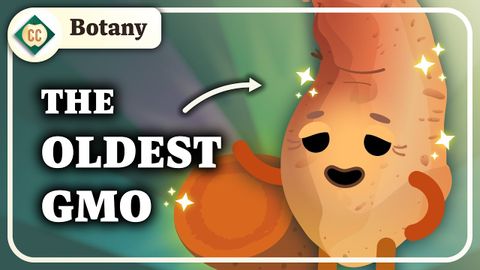轉基因生物並不新鮮:植物育種與基因編輯:植物學速成班 #11 (GMOs are Nothing New: Plant Breeding & Gene Editing: Crash Course Botany #11)
 沒有此條件下的單字
沒有此條件下的單字US /spɪˈsɪfɪk/
・
UK /spəˈsɪfɪk/
US /ɪˈmjoon/
・
UK /ɪˈmju:n/
- v.t./i.出現;估計;我認為〜;認為
- n.身影;(計算過的)數量;肖像;圖;形狀;人物;名人;人影;數字
US /ˈbesɪkəli,-kli/
・
UK /ˈbeɪsɪkli/
